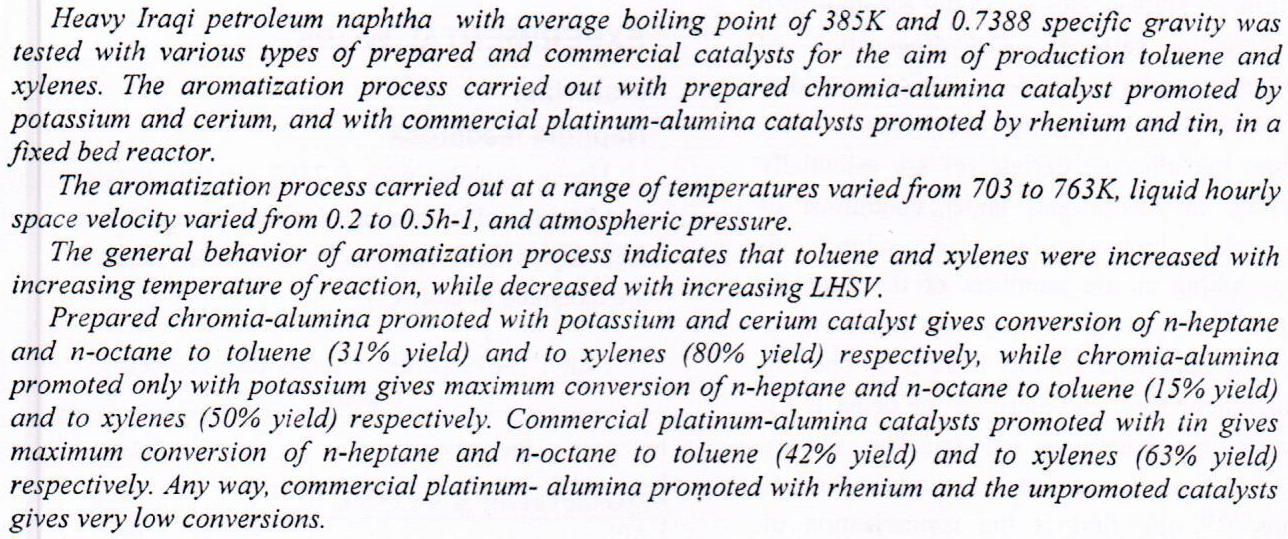
In this work an experimental simulation is made to predict the performance of steady-state natural heat convection along heated finned vertical base plate to ambient air with different inclination angles and configurations of fin array. Two types of fin arrays namely vertical fins array and V-fins array on heated vertical base plate are used with different heights and spaces. The influence of inclination angle of the plate , configuration of fins array and fin geometrical parameters such as fin height and fin spacing on the temperature distribution, base convection heat transfer coefficient and average Nusselt number have been plotted and discussed. The experimental data are correlated to a formula between average Nusselt number versus R
... Show MoreIn humans, Pseudomonas aeruginosa is the second most frequent gram negative nosocomial pathogen in hospitals and has the highest case-fatality rate of all hospital-acquired bacteremia because of the hardy resistance of these bacteria to mechanical cleansing as well as to disinfectant, and many antibiotics. The susceptibility of bacteria against the antibiotics is modulated by several local factors such as temperature which modified drug efficacy, so this study was carried out to evaluate the effect of different temperature (20,42,45)Ċon the susceptibility of Pseudomonas aeruginosa to the minimum inhibitory concentrations (MIC) of the antimicrobial agents before and after irradiation. The samples collected from 150 persons suffering from
... Show More (4)
(4)
 (2)
(2)
Frequency equations for rectangular plate model with and without the thermoelastic effect for the cases are: all edges are simply supported, all edges are clamped and two opposite edges are clamped others are simply supported. These were obtained through direct method for simply supported ends using Hamilton’s principle with minimizing Ritz method to total energy (strain and kinetic) for the rest of the boundary conditions. The effect of restraining edges on the frequency and mode shape has been considered. Distributions temperatures have been considered as a uniform temperature the effect of developed thermal stresses due to restrictions of ends conditions on vibration characteristics of a plate with different
... Show MoreDensities ρ and viscosities η for several concentrations of amino acids (Serine, Cysteine and Threonine) at different temperatures (298.15, 303.15 and 308.15K) have been measured. On the basis of these data, the apparent molal volumes v , partial molal volumes at infinite dilution v , slope Sv , Gibbs free energy of activation for viscous flow of solution ∆G1,2 and Jones – Dole Bcoefficients were calculated the nature of solute-solvent and solute-solute interactions have been discussed in terms of the values of v , v , Sv and B-coefficents
Background: Radiotherapy, is therapy using ionizing radiation in order to deliver an optimal dose of either particulate or electromagnetic radiation to a particular area of the body with minimal damage to normal tissues. The source of radiation may be outside the body of the patient (external beam irradiation) or it may be an isotope that has been implanted or instilled into abnormal tissue or a body cavity. Called also radiotherapy. The aim of work studies the relationship between the depth dose and the high photon xray energies (6MeV and 10MeV). Patients and methods: in our work, we studied the dose distribution in water phantom given at different depths (zero-18) cm deep at1cm intervals treated with different field size (5×5-,10×1
... Show MoreIn this work was prepared three different types of modified screen printed carbon electrode (SPCEs) with drops casted method, the used carbone nanomaterials were the MWCNT, functionalized –MWCNT (f-MWCNT) and After several experiments were made to find an appropriate ratio to make good GOT/f-MWCNT nanocomposite, and found the suspension mixture (1:1) from GOT/f-MWCNT (f-MWCNT-GOT). The electrical and physical properties were performed with cyclic voltammeter technique, and studied the maximum current response, the effective surface area, effect of the pH value and the determination of active surface area for MWCNT-SPCE , f-MWCNT-SPCE and f-MWCNT-GOT/SPCE as (0.04 cm2), (0.119 cm2) and (0.115 cm2) respectively, the surface coverage concent
... Show MoreDiesel engine oil was subjected to thermal oxidization (TO) for six periods of time (0 h, 24 h, 48 h, 72 h, 96 h, and 120 h) and was subsequently characterized by terahertz time domain spectroscopy (THz-TDS). The THz refractive index generally increased with oxidation time. The measurement method illustrated the potential of THz-TDS when a fixed setup with a single cuvette is used. A future miniaturized setup installed in an engine would be an example of a fixed setup. For the refractive index, there were highly significant differences among the oxidation times across most of the 0.3–1.7 THz range.
 (10)
(10)
 (9)
(9)
 (18)
(18)
 (17)
(17)
